BACKGROUND
In the Hebrew Preface we discussed the issues with Canaan and the Land of Canaan along with G-d’s engaging Abram promising to give him the Promised Land and the connection to the Clan of Ever from his great grandfather Shem giving us the Hebrew language and People.

BEGINNINGS OF PICTOGRAPHS AND WRITING SYSTEMS
During the time frame from Abram through Moshe (Moses) which is roughtly 3900 B.C.E through 3500 B.C.E we see writing start to develop independently in 4 different areas of the world. Two of the first forms were Cuneiform in Sumeria and Hieroglyphics in Egypt. We find Abram born and growing up in Ur which is where the earliest Sumerian Cuneiform tablets were found and elsewhere we place the Israelites in the area of Egypt, We also know that Abram did visit Egypt and had a brief bad experience there but did not stay long enough to have done significant work on building the Hebrew alphabet from the Hieroglyphics. He also spent significcant time in Sinai, Canaan or Israel (aka The Holy Land), and all the way to Aram/Babylonia. Two other important people are Joseph who was the Viceroy in Egypt and could have mastered Hieroglyphics and impacted the development of the Ancient Hebrew writing system and Moshe (Moses) who grew up in Pharoah’s palace and could have had all the education he desired. While we cannot rule out other potential people involved with the development of the Ancient Hebrew writing system, most people were so heavily involved with producing food and other necessities that they did not have the luxury of engaging in academic pursuits. With Moshe’s future task of writing the Five Books of Moshe, the education in Egypt along with the possible transition to Hebrew could have been extremely significant and as such I believe that Moshe is the most likely person to have accomplished this and this might have been the greatest revenge for the oppression in Egypt of the Jews. More will be said on this in the section on Moshe’s Rise and Fall from Leader of the Jewish People.
Then we see a convergence and divergence as the Hebrew interface with the Egyptians. Hieroglyphics have around 800 to 1000 pictographic along with a few phonetic symbols but this did not lend itself to be easy for the general public to learn writing. It is also interesting to note that they found pyramids with both Hieroglyphics and Ancient Hebrew inscriptions on the wall. So someone chose about 22 phonetic based images associated with the most essential words and concepts and created a phonetic based Alphabetic writing system. The sound of the beginning of the word indicated the sound associated with the letter. With a simple but powerful 22 letter alphabet and endless combinations we have a massive potential for constructing words and from words paragraphs all the way to volumes of books. But not only did the revolutionary concept elevate language to a whole new level but it breathed a new kind of life into language where oral communications evaporated in a breath the written materials could be reduplicated, taken from one place to another (spatially liberated), and finally could persist forever traversing time through infinity. And on top of all of this the new writing system was essentially language neutral and could be adapted to Greek as easily as Hebrew. This resulted in the Ancient Hebrew and Greek being unrelated languages but both shared the same roots in the writing system.
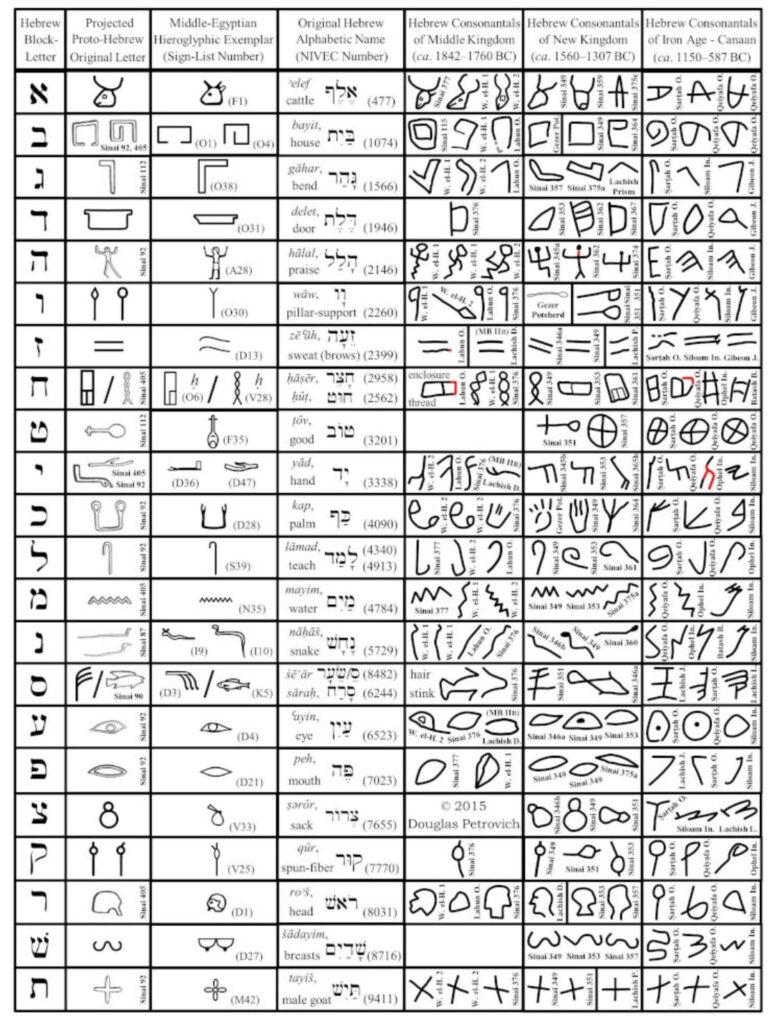
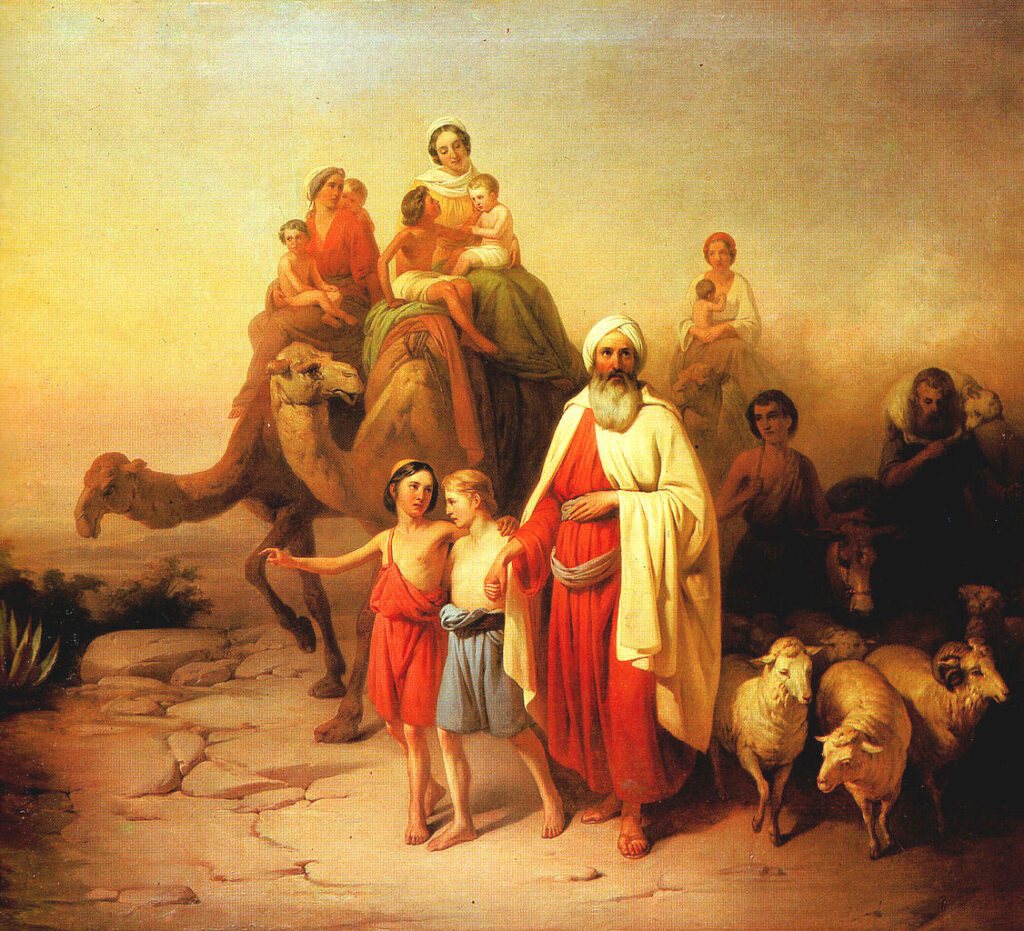
THE TRANSPORT VEHICLE
Now the Phoenician sea traders enter the picture and realize the amazing importance of this new writing mechanism and they then “stole” the idea and transported it to many other countries on the Mediterean Sea. As such Phoenicians are often given credit for the invention of the writing system. This is analogous to giving the Pizza delivery boy the credit for baking the pizza because he is the only visible person associated with the product. Also I wonder if phonetics and other “phone” based words meaning sound derive from the name Phoenician. So when Hebrew created the sequence of Aleph Beit Gimmel and the Phoenicians express delivered it to Greece where it was adapted to local standards and became Alpha Beta Gamma retaining the same sounds and sequence but changing the associated names to what made sense in Greek. And many archaeologists credit the Hebrew for bridging the Hieroglyphics to the phonetic based writing system. There may also be a connection to cuneiform as well.
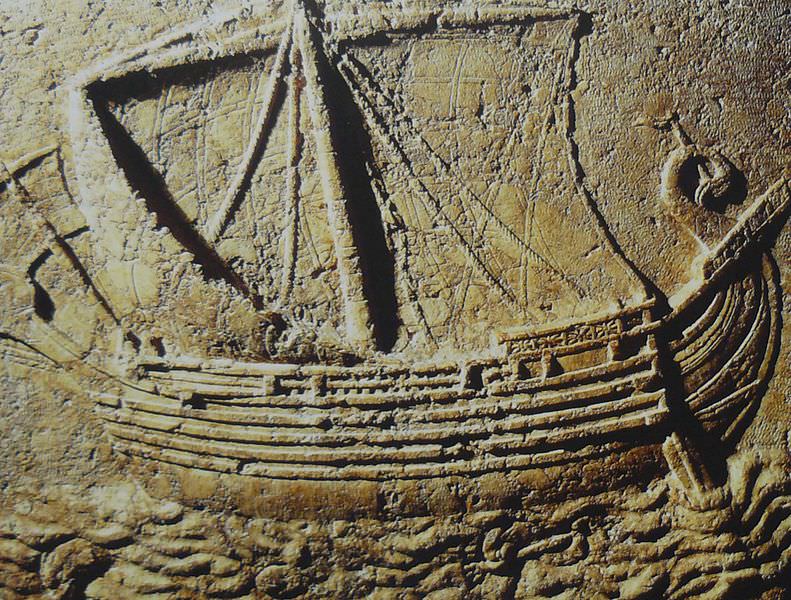
THE IMPACT OF WRITING TOOLS
The early tools for writing were chisels carving the letters into the walls of caves, stones, and so forth or implements pushed into clay which would be hardened. Since most people were right handed it became natural to write from right to left. Later on when the tools were changed to ink based writing the natural writing direction had changed to left to right so as not to smudge the areas already written and write into new clean areas. But once the languages defined the official direction it would be difficult to change. So Hebrew, Arabic, and Aramaic remained right to left while Greek changed horses in the middle of the race.
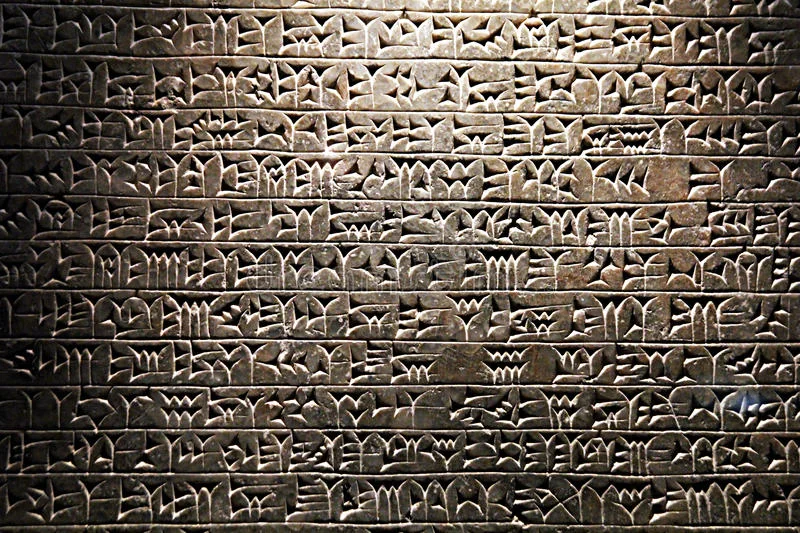
LETS DIVE INTO ACTUAL ANCIENT HEBREW ALPHABET
But before we begin I have to state that many if not most Jews especially Orthodox do not know or understand that we began with a totally different writing system which they do no know. Many are taught that the Bible was written exactly as they see it in their synagogues and actually believe the this is the way Moshe (Moses) received the Torah on Mt. Sinai and that it has been perfectly replicated through the millennia.
Please note that the leftmost column is the current Modern Hebrew alphabet based on Assyrian letter system. The next column to the right has final letters which were only introduced with Modern Hebrew alphabet. The third column from the left is the actual finalized Ancient Hebrew writing system. The fourth column from the left is the earlier Proto-Canaanite or Proto-Sinaic Alphabet which was the precursor to the Ancient Hebrew writing system. And the next columns as shown in the column header are pronunciation, numeric value, and basic meaning. This will be addressed in far more depth in the section of Multi-dimensionality of the Hebrew alphabet. Following the Hebrew Alphabet Figure is the Figure with the Adaptation of Phoenician/Ancient Hebrew to Greek which is not even a Semitic Language.



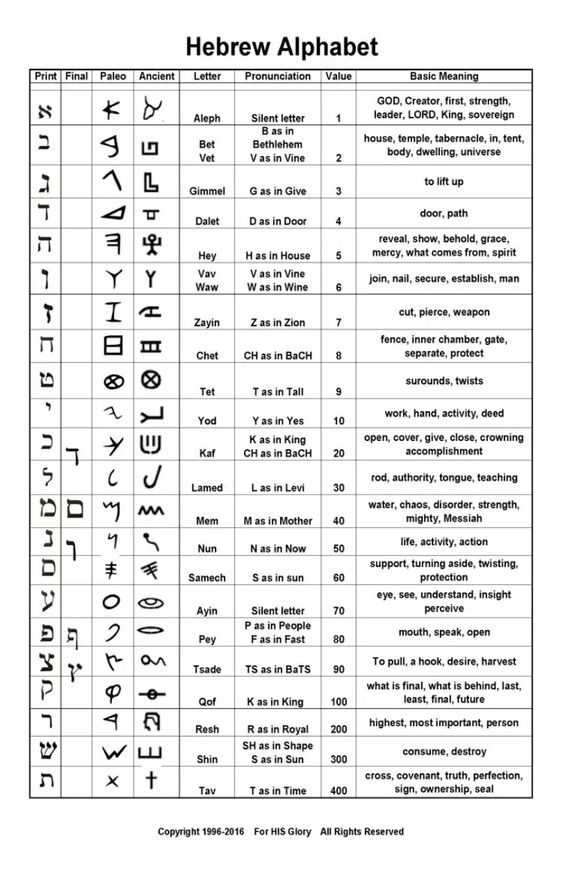
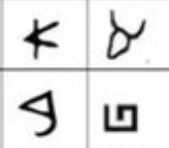



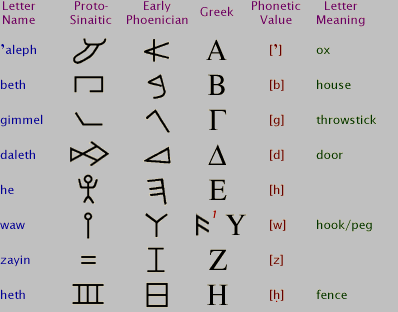
MOVING ON TO THE MAJOR JEWISH HISTORY TIMELINE
Now we are going to work on a major high level view of Jewish History focusing on major impact of the Jewish People, the Holy Land, the Language(s) used by Jewish People in conjunction with the Linguistics, Hebrew Competence, and the Holy Scriptures.
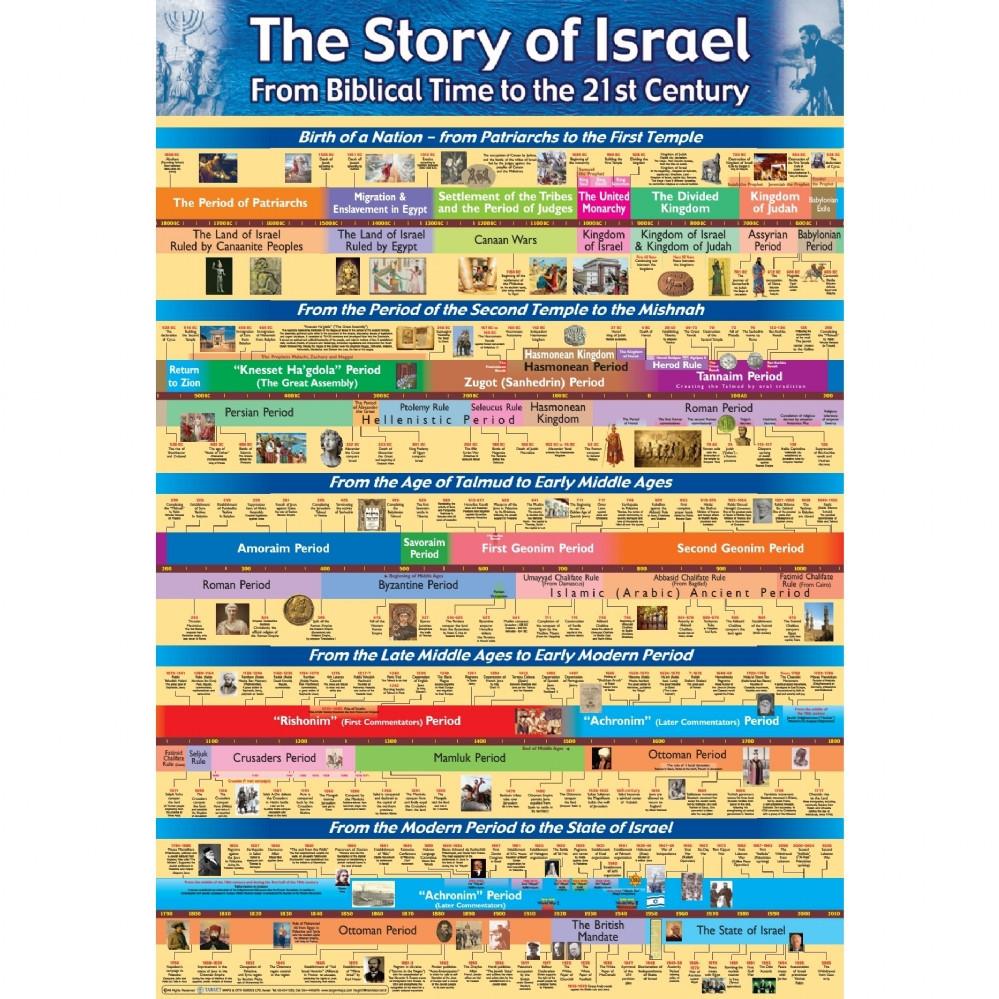
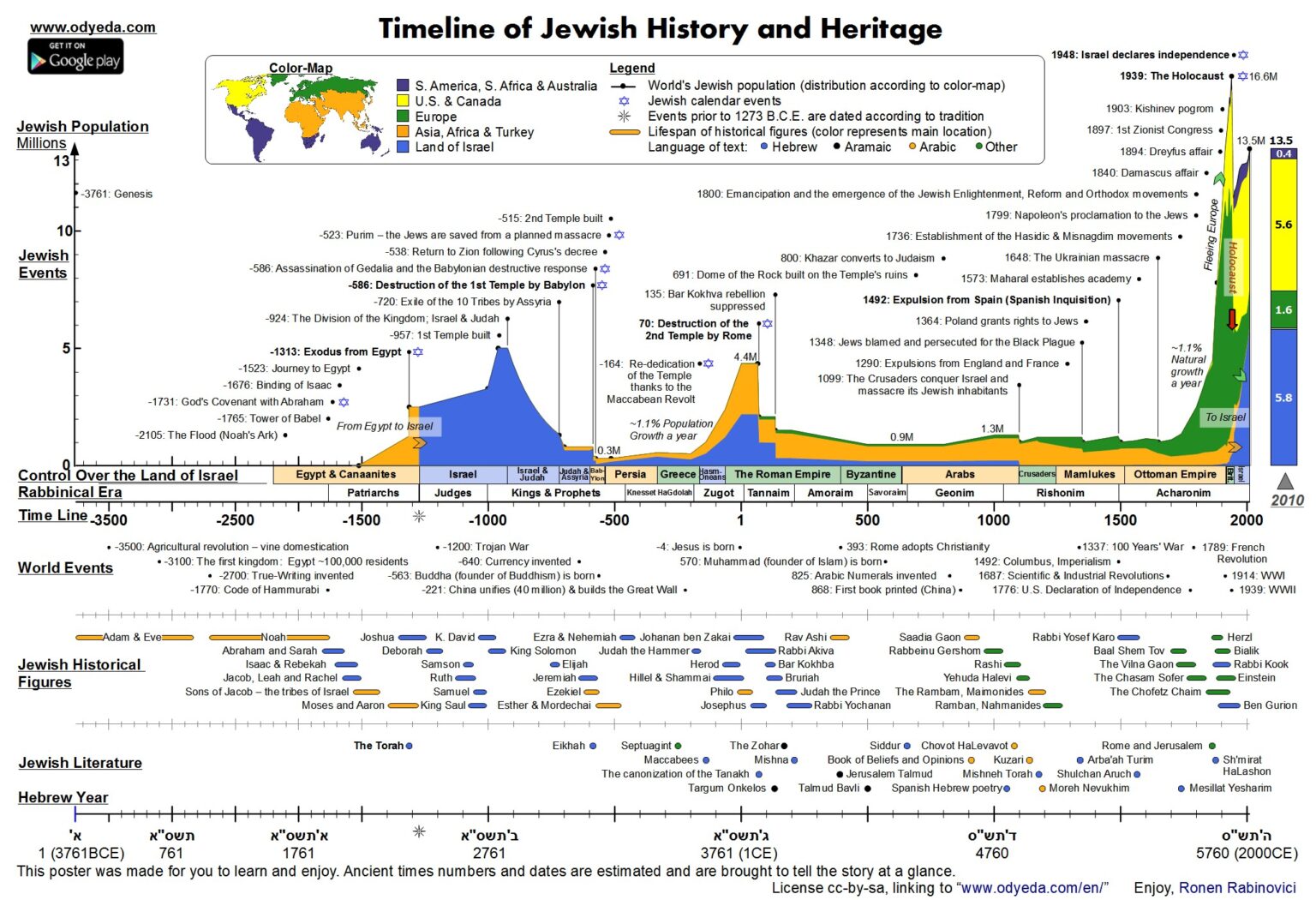
THE JOURNEY BEGINS
Our reference key will be the Jewish History Timeline above. The Torah in its brilliance must define the context for the subsequent events. So it begins with Creation to answer the key questions of how did we get here. What are the political, economic, social, legal, and cultural situations and who are the players? The answer comes back that we are starting from scratch. Adam, Eve, their Garden, and snake are introduced. Then G-d begins building the plot, discussed a fruit based healthy low carb diet promoted by their pet snake, an eviction notice, and parenting issues with a couple unruly children. A tragic accident occurs and they try to call 911 but no one answers. The brothers tried to resolve their issues and bury the hatchet but in the end they buried Able We move forward adding neighbors to the plot who decide to design a new high rise and G-d decides he does not want to share the penthouse with anyone else and call in a wrecking crew and a whole bunch of unemployed Berlitz teachers. The plot thickens and sickens and G-d decides that this is not going according to plan so lets push the restart button and orders Noah to start a yacht club and gather all his pets with seating by couples. Noah immediately begin to tool up to the task and learns ark welding. The new chapter has a stormy beginning. Gilligan cannot find his island and this cruise is not going very well. People were very ravenous as a little black bird stopped by to check on everyone. Eventually Lovey Dovey returns from a brief jaunt extending an olive branch and they return to port Ararat, disembarked, collected their luggage and moved on to the next chapter.

SHIFTING TO THE JOURNEY OF LANGUAGE
The story of the Tower of Babylon introduces the concept of expansion of languages in the region along with communications issues is floated on rafts of Phoenician trade ships powering commerce in the Mediterean Sea region.
We also know from the story that Abram’s language and people are Hebrew (Ivrit from the Clan of Ever) and the Ivrim (Hebrew People).
At this time we see Egyptian hieroglyphics in Egypt and Cuneiform in Sermer and Akadia. At this time there are also prevalent famines forcing people to seek food, grazing lands, and ultimately compelling regional movement between Canaan, the Sinai, and Egypt. The hieroglyphics had pictographs and phonetic components in the body of approximately 800 hieroglyphs. But expansion of the hieroglyphic base was a lost cause and some of the people driving and crafting the road forward realized that having a few building blocks, letters with associated visual representation and audible vocalizations was a far more feasible, efficient, and practical solution. So some 20 or so odd elements were chosen from hieroglyphics, possibly modified and adapted, and proto-Sinaic and pro-Canaanite were born. Because a lot of the visual proof was found in pyramids, connected to Egyptian history, and bridged to Sinai archaeological evidence from Egypt to Canaan seems to suggest that the Hebrews were a strong catalyst in this process. Some people even go so far as to suggest that mastery of hieroglyphics along with the introduction of the new Phoenician/proto-Sinaic/proto Canaanite/proto-Hebrew linguistic foundation required a whole lot of education across multiple languages and tools and that the most likely person who could accomplish this was Moshe (Moses) WHO grew up in Pharoah’s palace and had access to all required resources and education. Furthermore Moshe ultimately had to travel escaping for his life and possibly building his skills to face the monumental challenge of writing, editing, and proofing the entire Five Books of Moses. We then consider the story in Exodus where Moshe is judging his people from morning to night and he and the people are weary and on the verge of collapse when Yitro (Jethro) his father-in-law recommends “delegation” and setting up a hierarchy of judges to distribute the work load. We may presume that Moshe was brilliant and learned all the skills for the job, had the courage and dedication to take on the challenge, and ultimately learned all the organization methods to accomplish the enormous task while leading the people, conducting battles, organizing travel logistics, and so forth. Again this may be conjecture but as we go on to study the key people, the struggles, and so forth this takes on more and more credibility. Sometime one brilliant gifted and dedicated person can move mountains and accomplish the impossible. Moshe is most likely the most important person in the Bible and we will study more about him later.
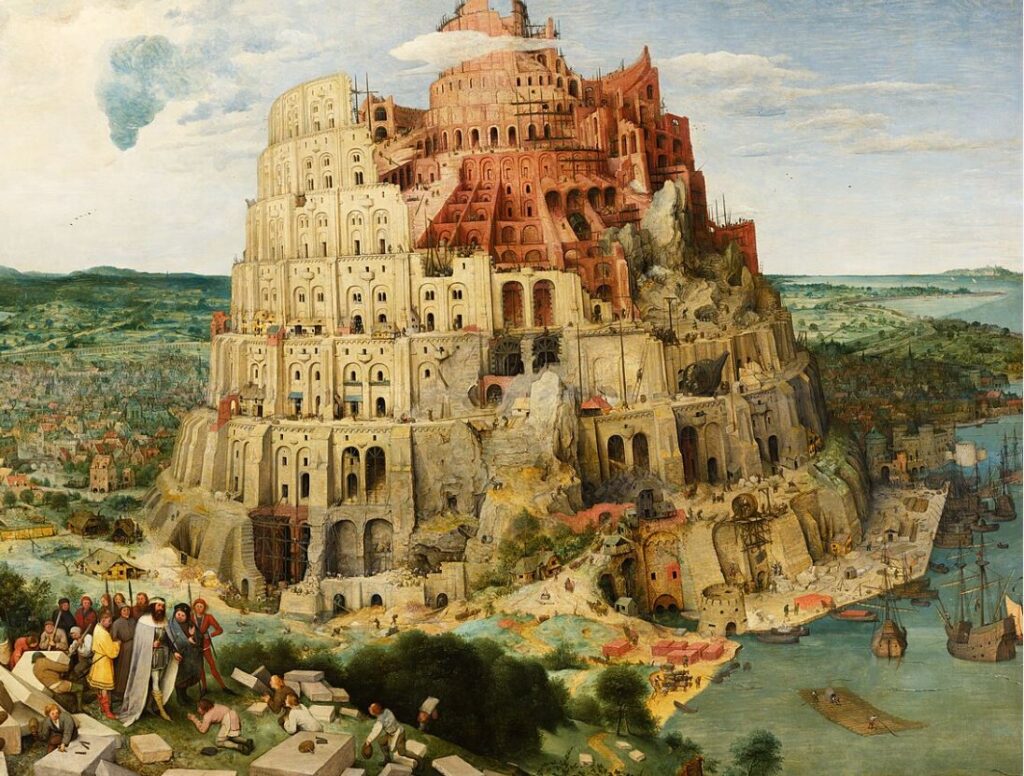
FROM THE CONQUEST OF LANGUAGE TO THE CHALLENGE OF FAMINE AND ULTIMATELY THE ENSLAVEMENT IN EGYPT
With no food Yaakov (Jacob) sends the 10 brothers to graze the sheep. After too much time passes and they do not return Yaakov sends Yosef (Joseph) to look for the brothers. They plot against him and throw him in a pit and he is ultimately sold in Egypt to Potiphar. Problems arise and Yosef is put in prison, correctly interprets the dreams of the Butler and Baker which lead to Yosef also interpreting the dreams of Pharoah and rising to be the viceroy of all of Egypt and saving everyone from the Great Famine. At the end of this episode Yehudah pleads with Yosef not to demand Benjamin be compelled to come to Egypt since this would his Yaakov) bringing Yosef to break down in tears, reward Yehuda with the name of the Israelites changed from Ivrim (Hebrews) to Jews (from Judah). So this chapter ends with the clan going to Egypt, to the land of Goshen, and integrating into Egyptian society. It is presumed that they adapted to the language, culture, and all requirements of the situation. But nothing in the world is totally static and the situation changes dramatically. A new Pharoah comes along who owes nothing to Yosef or the Jews. So he decides to build a new socio-economic system at the expense of the Jews enslaving them for the next several hundred years breaking the people in every way possible with brutality, murder of the first born, beatings, and on and on. This is the first massive organized institutionalized HOLOCAUST of the Jews. But remember this is not 6 years like 1939-1945 but hundreds of years breaking their backs and spirit. Ultimately Moshe seeks an Egyptian taskmaster mercilessly beating an Israeli slave. Not being able to stand by and watch this travesty Moshe take matters in his own hands, kills the Egyptian, and must flee for his life. There is an amazing secret message in the text that I will share with you later in another section. But this leads Moshe to the Burning Bush where G-d formally appoints Moshe to the Leadership of the Jewish People. Moshe then begins the process of liberating the Jewish People from Egypt and together with the Revelation at Mount Sinai becomes the most important historical and religious event in the Five Books of Moses giving up the holiday of Pesach (Passover) celebrating our Liberation from Bondage and receiving of G-d commandments during the subsequent Journey to the Promised Land.
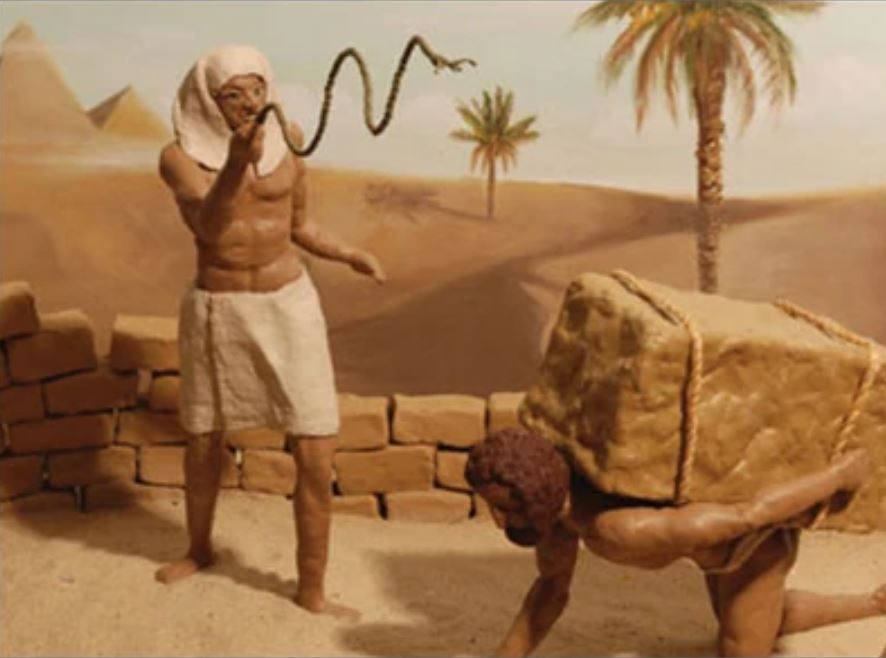
MOSHE’S SISTER AND HIS DREAM DIE BEFORE MOSHE CAN COMPLETE HIS MISSION
In Numbers chapter 20 Miriam who has watched over Moshe his entire life now dies. This is the first time in Moshe’s life that his dear sister is no longer at his side to be his friend and mentor and care for him. He is distraught and in anguish. And at the same time the rebels come to Moshe to complain about not having water not giving him a moment to grieve in this most difficult time. For one fleeting moment Moshe loses his composure and hits the rock twice. The cost him his dream of a lifetime to fulfill his lifelong mission of taking the Children of Israel into the Promised Land.
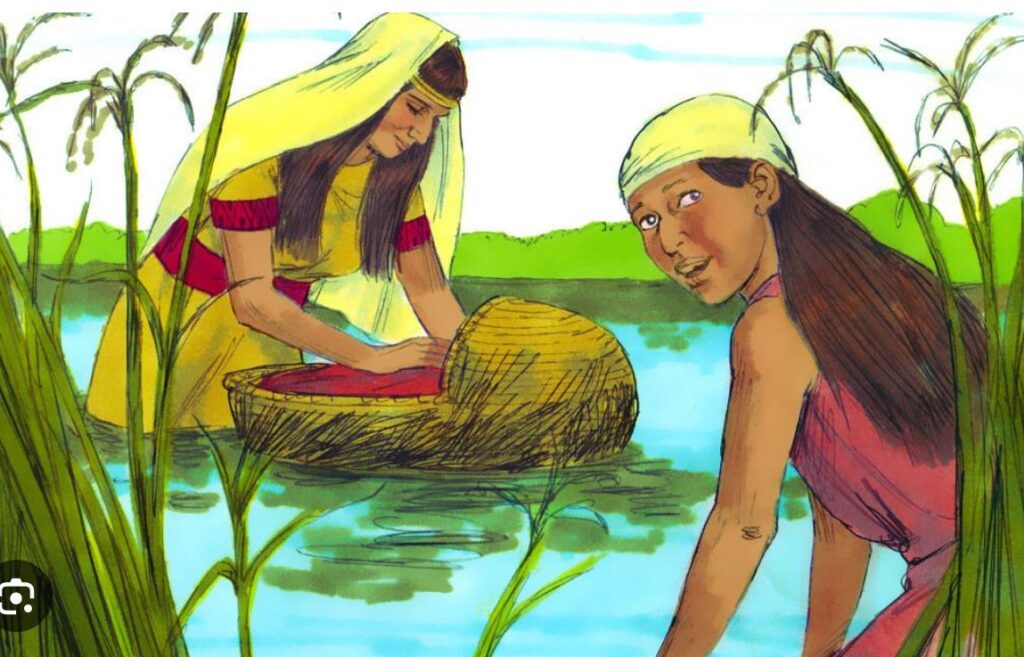
THE TORCH IS PASSED TO YEHOSHUA (Joshua)
We now begin the next major book of the Tanakh (Old Testiment) called Prophets or Neveim and begin the Period of Prophets and Judges. We begin with Joshua receiving the torch from Moshe. We have various Judges but Samuel rises to be the leading judge. The People of Israel are strongly influenced by the surrounding nations who all have Kings as leaders. And the Children of Israel ask Shmuel to appoint them a King. Samuel begins the process and chooses Saul whose only qualification for the job is that he is a head taller than anyone else. Then along comes David and G-d replaces Saul with David. And these are the two main periods after the The Five Books of Moshe called the Period of Prophets and the Kings Dynasty where the crown is passed down in David’s family and Shlomo (Solomon) builds the First Temple.

THE BABYLONIAN EXILE IS THE NEXT GREAT HOLOCAUST TO BEFALL ISRAEL
King Nebuchadnezzar begins his conquest to build a massive empire. His legions got to Israel and murdered hundreds of thousands of Jews, destroys the country, destroys Jerusalem, and destroys the First Temple. Next he takes the survivors lock stock and barrel and forcibly takes them to Babylonia which now begins the Babylonian Exile.
After Egypt this is the next darkest period in Jewish history to befall the Jews. So much so that the horrors traverse so many books of the Bible including Lamentations, the Book of Esther, Ezra, Daniel, Isaiah, Ezekiel, and so forth.
From the Book of Esther we know that some of the people wandered off during the journey to Babylonia and Mordechai and others go to Persia. But again there was another attempt to annihilate the Jews under Haman and Achashverosh.
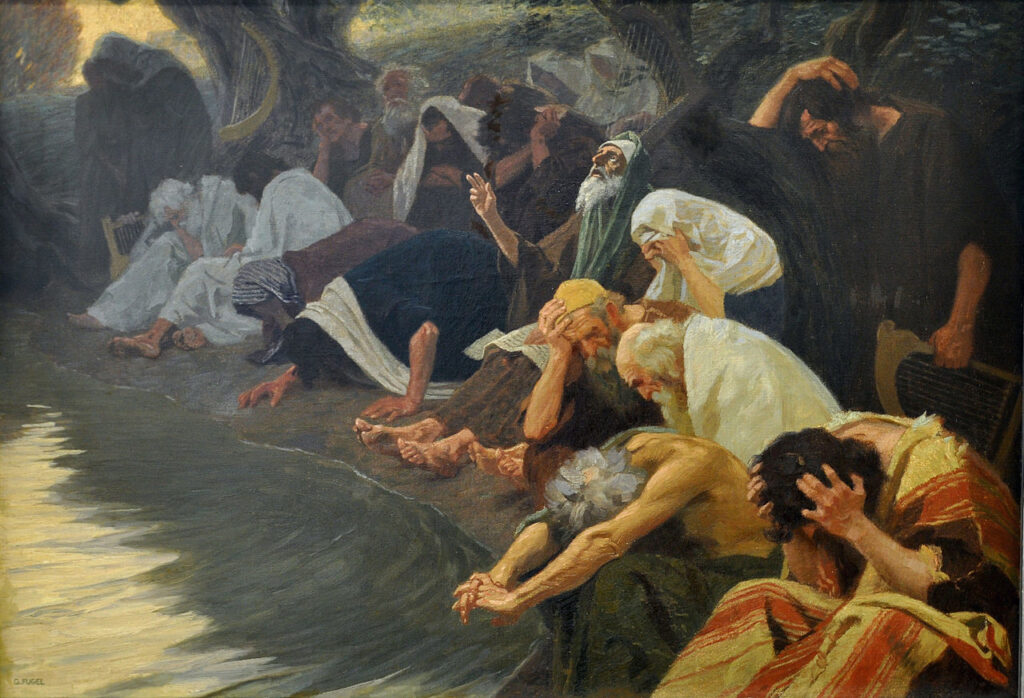
THE BABYLONIAN EXILE IMPACT ON LANGUAGE
In Babylonia the first crisis with respect to language is the loss of our writing system although I am still perfectly proficient in the Ancient Hebrew Writing system. The second crisis is that our daily language changed from Hebrew to Aramaic. As such the intimacy with our Hebrew and proficiency was seriously degraded. Hebrew became a second language only used in religious rituals.
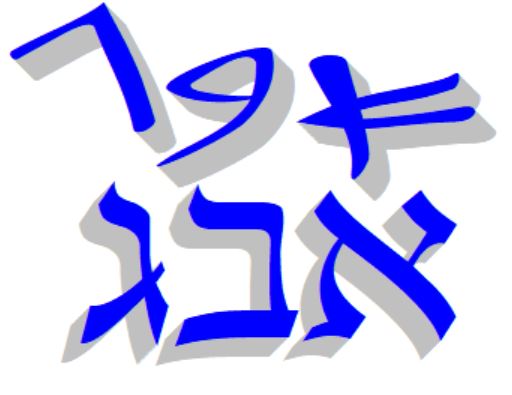
And the challenge of preserving our Holy Books became more difficult. By this time we adopted the Assyrian alphabet writing system which is what we still use today. With the crisis of the Babylonian Exile it became more and more difficult to find scribes and the scribes now had to transition from the Ancient Writing system to the new writing system. This was a slow process and for example in one of the later manuscripts of the Book of Yeshayahu (Isaiah) the entire book was in the new Assyrian writing system except for the most holy name of G-d which Jews are not allowed to pronounce. Thus the name of G-d stands out dramatically because of the difference between the Ancient and new writing systems. This manuscript can be found in the Shrine of the Book museum in Jerusalem today and was a part of the Dead Sea Scrolls.
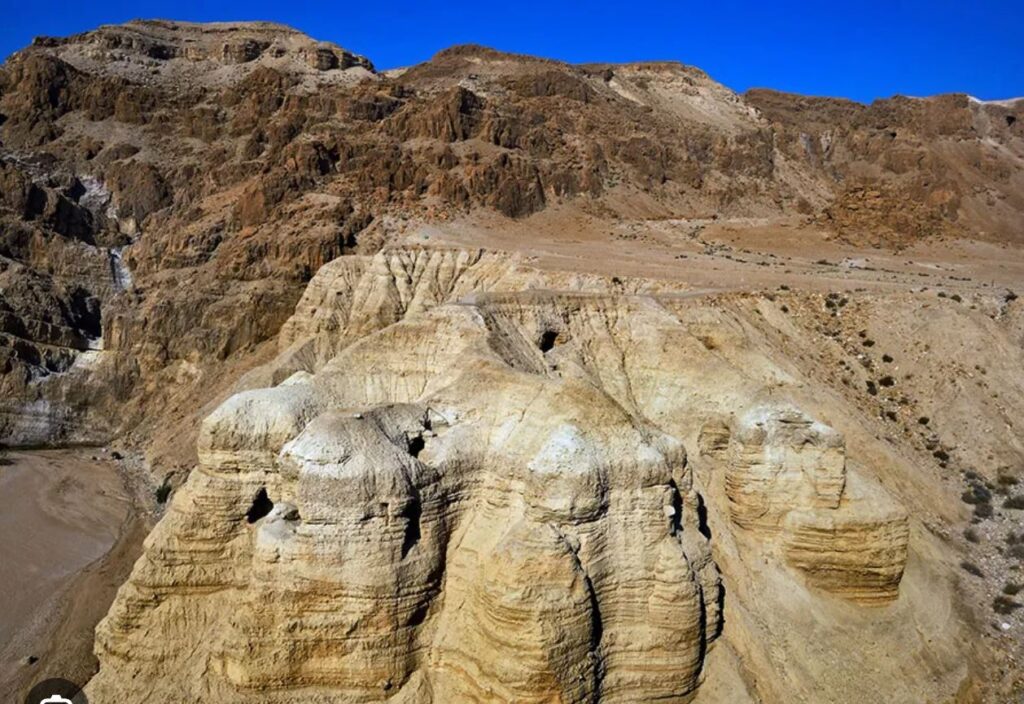
THE BIG PROBLEM WITH TISHA B’AV AND PURIM
The Babylonian Exile was clearly the greatest disaster in Jewish History in the post-Canaanite Conquest Period dominating most of the rest of the books in Prophets and Other Writing of the Old Testament.. This includes Lamentations, the Book of Esther, Chronicle Yeshayahu (Isaiah), and on and on. But today few people comprehend this. It has descended into a long list of Jewish Holidays that are superficially celebrated. Purim parades with people getting drunk. Purim Spiels have more audience that the full readings and key remembrance events where people have forgotten more than they ever knew. And beautiful little girls in their crowns, tiaras, adorned with white dress in celebration rather than tragic mourning after another major HOLOCAUST in our history.

AFTER THE BABYLONIANS COME THE GREEKS
Ironically after the Jews survive the attempted HOLOCAUST in Persia, apparently there is a new strong influence of Queen Esther that ultimately leads to King Cyrus decreeing the project to rebuild the Temple in Jerusalem.
After this we continue to the invasion by the Greeks whose goal is not to wipe out the Jewish People but to destroy Judaism. At this point in history we are in the Macabean Dynasty who are from the Priest family of Zadok. These people are called Tzedukim or Saducees in English. Then comes a new group to challenge the dynasty for leadership of the Jewish People and these people were the Prushim or Pharissees. And these two groups hated each other more than the Democrats and Republicans today. But it was the Macabbean fighters who defeated the Greeks and the rabbis who comprised the Pharissees did not want to give credit for the victory over Greeks to the Macabeans. So hundreds of year after the events of Hanukkah they made up a fable about finding a cruise of oil in the Temple that should have been sufficient for 1 day but lasted 8 day giving them enough time to manufacture new oil for the Menorah (candelobra) in the Temple. The truth of the matter was that at the time Judaism had specific celebrations of holidays and events at specific times at specific locations. And because the Greeks captured the Temple they did not celebrate Sukkot (7 days) followed immediately by Shmini Atzeret (1 day holiday immediately after Sukkot for an 8 day continuum) so the Macabees decided upon recapturing the Temple to immediately celebrate the 8 day total event late that year. And the was the real reason Hannukah was 8 days and this is documented in the Book of Maccabees and the History of Josephus. However, when the rabbis canonized the Bible after the Roman Exile they simply did not have enough scribes to meet the challenges of recopying the holy books to perpetuate them. So the rabbis had to make some hard decisions as to which books to keep and which to discard. And because the Book of Macabees did not fit their agenda it was discarded. However it had already been translated in the Vulgate and Septuagint.

THE PHARISEES TRANSFORMED ORIGINAL JUDAISM TO A NEW RABBIC FORM OF JUDAISM
Moshe had Korach and any number of challenger through his entire period of leadership. The process never ever ended. But the transformation to Rabbinic Judaism was different. They had to somehow justify there emergence and qualification for overthrowing the current dynasty of the Priests named after Tzadok. So they invented a story that at Mt. Sinai G-d gave the Jews and Written Torah and an Oral Torah. They then maintained that they passed on the Oral Torah from father to son even though their movement had just begun and there were no rabbis before this. But worse they seemed to have agendas against women so they forced the women to wear Jewish Burkas, wigs. and long sleeves and clothes that did anything but flatter the women. The women were not allowed to sing before mixed gender audiences or men in general even though in the Torah we know that Miriam was the follow up act after the men with Moshe after crossing the Red Sea. They either put up barriers between men and women in synagogues or outright banished the women all together. They modified prayers to symbolics evict the women. See בפי ישרים in the Shabbat morning service. I will try to explain this in an appropriate page later on.
The Rabbis also froze existing Jewish Biblical material after throwing out books that did not fit their agendas. And then they shifted their efforts to creating a whole new body of books beginning with the Mishna, continuing to the Talmud, and then adding philosophical and and other literature to shift the focus whenever possible from the core Torah/Tanakh to their works while denying this all the time and stating that the Torah/Tanakh trumps all else and at the same time they changed and distorted so much of the Torah/Tanakh. The two primary examples are the laws of Kashrut and rules of Shabbat. This will be discussed later. But to their credit they also transformed Judaism from a static religion with very specific festivals and celebrations at specific times in specific places to a “portable” religion where one could take their Siddur (Prayer Book) and Tanakh (Bible) anywhere in the world and practice the new Judaism. Had they not done so Judaism might have died after the Roman Exile.

NOW THE ROMANS COME FOR THE NEXT HOLOCAUST
The next army to invade the Holy Land was the Romans and in 66 C.E. the Israelis Revolted. The Romans proceeded to murder hundreds of thousands of Jews, destroyed the country, Jerusalem, and the Second Temple. They murdered Christ and banished the Jews from their Holy Land leaving only a precious few in specific locations like Jerusalem, Pekiin, etc. The Jews were forced to leave their Home Land and some went to Arabic countries across the Middle East and others proceeded to Europe and beyond. Those that went to Arabic countries were called Sepharadim because of the Spanish influence. And those who went to Europe and beyond were Ashkenazim which derives from Germanic.
Similar to the Babylonian Exile where the Jewish People lost their Hebrew for Aramaic at least Aramaic was still a cousin language related to Hebrew. With the Roman Exile the Jews who went to Arabic countries had to pick up Arabic and Arabic as a Semitic language was not only closely related to Hebrew but in many cases offers new incites to Hebrew and reconnects Jews to cultural linguistic elements that they had lost. This may be discussed in another section at the appropriate time.

FINALLY THE ROMANS TRY TO FINISH THE JOB
So in 325 C.E. the Roman Emperor Constantine had the First Council of Nicaea. Until this point the early Christians were indistinguishable from the Jews. They used the same prayer books in synagogues using the lunar calendar and observing the same dietary laws and festivals. At the Council of Nicaea they gutted Christianity of every connection to Judaism. The Sabbath relocated from Saturday to Sunday for the convenience of some Roman god. The dietary laws were taken out with the trash. The Solar calendar replaced the lunar calendar until nothing remotely connected to Judaism remained. This created a deeper rift and chasm between Judaism and Christianity and through various vehicle the demeanor shifted to far more anti-Semetic with myths of atrocities that Jews commited against Christ and Christians. We were forever villainized. And this led to massacres in the Crusade, Spanish Inquisition, Pogroms in Russia, and on and on.

AND THEN SOME GOOD NEWS – THE TIBERIAN PERIOD
The Tiberian Period was from 750 C.E. to 950 C.E. and led by Aharon Ben-Asher. People were losing their connection to Hebrew mispronouncing so much of the text and not knowing the correct cantillation. So Ben-Asher took on the project of fixing this. He for the first time ever added vowels to Hebrew so people could now actually see and read the vowel instead of guessing. He also create another set of symbols patterned after the hand signals that the Gabbai (Official corrector for whomever was chanting the parts of the Torah/Tanakh during the synagogue service. This is the first time that we had a tangible documention of the sounds, pronunciation, emphasis, and melodies of the Torah/Tanakh. This dramatically increased the work of the sofrim (Scribes) who had to recopy all the texts to perpetuate the Holy Books but it was not easy. There is limited space and one had to cram the letter, the vowel, and the cantillation mark into that small real estate. And while this was an amazing dramatic advance it still was not perfect. There are two sets of vowels that have two different pronunciations (Sheva Na and Sheva Nach along with Qamats Kattan and Qamats Ragil). There are other challenges as well and few people, rabbis and cantors included, really know all the rules to know which is which. I do and am also trying to produce a new updated version of the Tanakh with totally unambiguous Hebrew typography. I also add color codings to help the reader and illustration to try to convey the brilliance and emotion of the Tanakh.
Also in this general time frame we first see a new form of the Bible bound in a Codex, the emergence of manuscripts with Spanish and Portugese artistic influence, and more. There was also the period of the Renaissance. Wars and atrocities never ceased but in terms of the evolution of Hebrew and the Holy Scriptures until the current times there was two major events.

